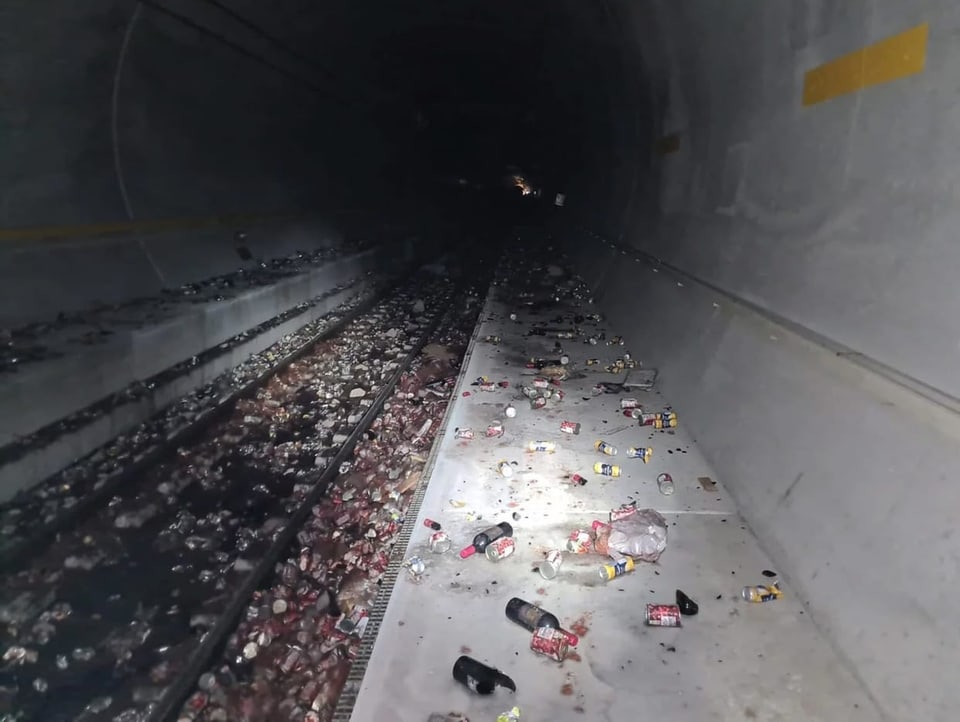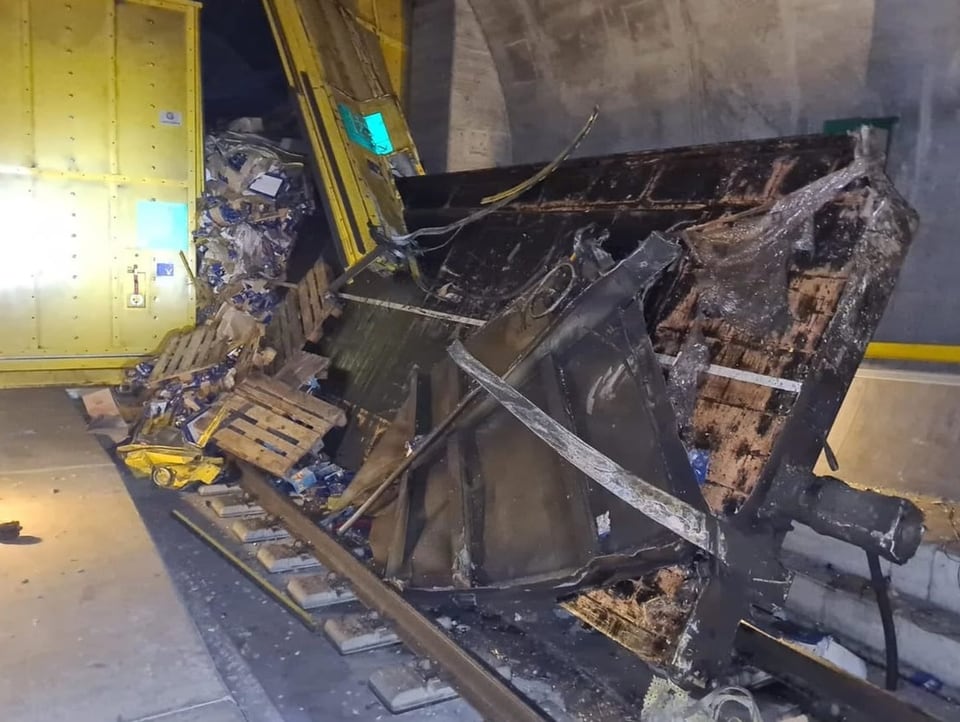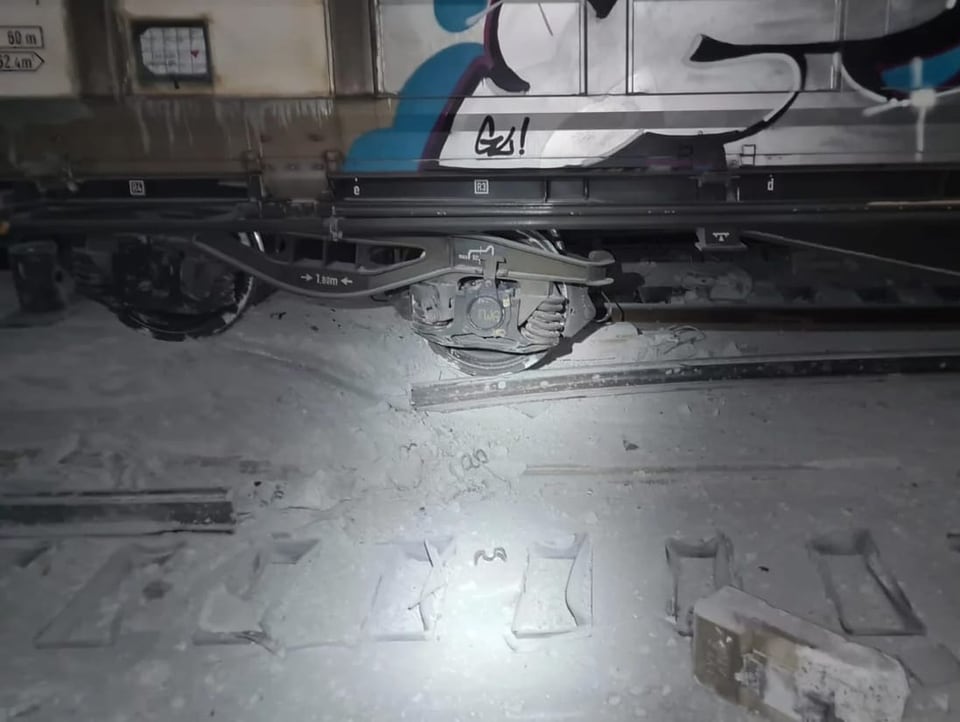Contents
The damage after the train derailment in the Gotthard tunnel is extensive – there is a traffic jam in freight traffic. Answers to the most pressing questions.
What happened? A freight train traveling from Italy to Germany derailed in the Gotthard base tunnel last Thursday. Since then, the 57-kilometer tunnel between Bodio (TI) and Erstfeld (UR) has been closed. Fortunately, there were no injuries in the accident.
What is the cause of the accident? The freight train probably derailed due to a broken wheel disc. A wagon drifted off at a point in Faido (TI), where trains can switch from one tunnel tube to the other. As a result, all of the cars following him derailed, a total of 23 out of 30. They were partially or completely destroyed. The Swiss Safety Investigation Board (Sust) found fragments of a wheel and traces of the derailment a few kilometers before the scene of the accident.
What is the situation in the Gotthard tunnel? The investigating authorities have partially cleared the accident site in the base tunnel. The locomotive and the running goods wagons have been transported out of the tunnel. 16 wagons are still at the scene of the accident, and there are still loads on the tracks. The SBB has started the clean-up work. The damage is great, but there is still no complete overview, says SBB spokesman Reto Schärli.
When will the Gotthard tunnel be open again? The analysis at the scene of the accident is ongoing. It is unclear how long it will be before a tunnel tube can be put back into operation. Schärli speaks of “several weekends” when the number of seats in both directions is noticeably limited and the travel time will take one to two hours longer. According to SBB, all trains will be diverted beyond August 16th. SBB will provide further information at a media conference on Wednesday at 1:30 p.m.
How is freight traffic going at the moment? Since both tubes of the Gotthard tunnel are closed, freight trains are using alternative routes. However, these cannot absorb the capacities of the Gotthard. “The new NRLA base tunnels are built in such a way that double-decker trains and high freight wagons can drive through them. But they failed to prepare the Gotthard mountain route in this way,” says railway expert Werner von Andrian.
Many trains are too high for the Gotthard mountain route and the Lötschberg base tunnel can only accommodate one additional train per hour and direction. The route over the Brenner Pass is closed due to construction work. Not all freight traffic can be managed by road either.
Are the trains jamming at the borders? With almost 70 percent of the transport volume by rail, the Gotthard Base Tunnel is the most important route through the Swiss Alps for freight transport. On average, almost 100 freight and 60 passenger trains run daily. With the closure of both tubes, there is now a traffic jam in freight traffic, emphasizes SBB spokesman Reto Schärli. “Some of the trains that wanted to drive through Switzerland are now parked in this country – the parking facilities are full. Numerous freight trains are also waiting to pass through abroad.”
What do logistics companies say? The largest transporter between Switzerland and Italy is Schöni Transporte. Managing Director Daniel Schöni emphasizes that the Gotthard tunnel was closed to freight traffic at a comparatively favorable time. “Fortunately, it’s the summer holidays in Italy. Accordingly, a large part of industry is at a standstill and freight traffic is greatly reduced. In this way, we were able to create good capacity to transport goods by road instead of by rail,” explains Schöni.
If the tunnel remains closed until the beginning of September, when the Italian economy picks up again, there could also be capacity bottlenecks on the road. Transport entrepreneur Benjamin Giezendanner blows the same horn: “A longer interruption would be a disaster for the European economy.”
How do major distributors react? Coop logistics manager Daniel Hintermann speaks of an “extraordinary situation”. “Coop relies entirely on the railways for transalpine transit traffic. Because the tunnel was closed, we had to completely switch from rail to road at short notice. It was not easy.” Migros announces that no major problems are expected. The rail cars would switch to the mountain route and the combined transport would be handled via the road.
Collaboration: Matthias Strasser, Adrian Lemmenmeier, Christian Häfliger.



